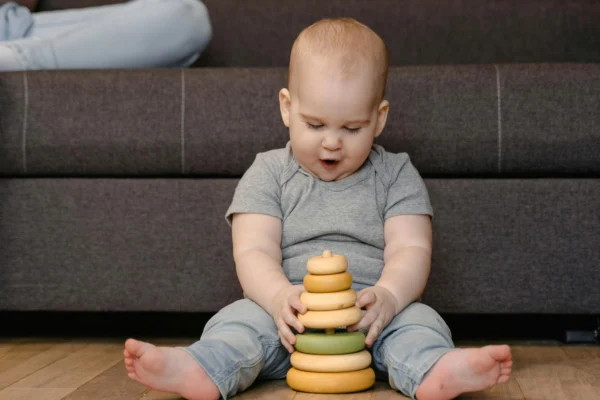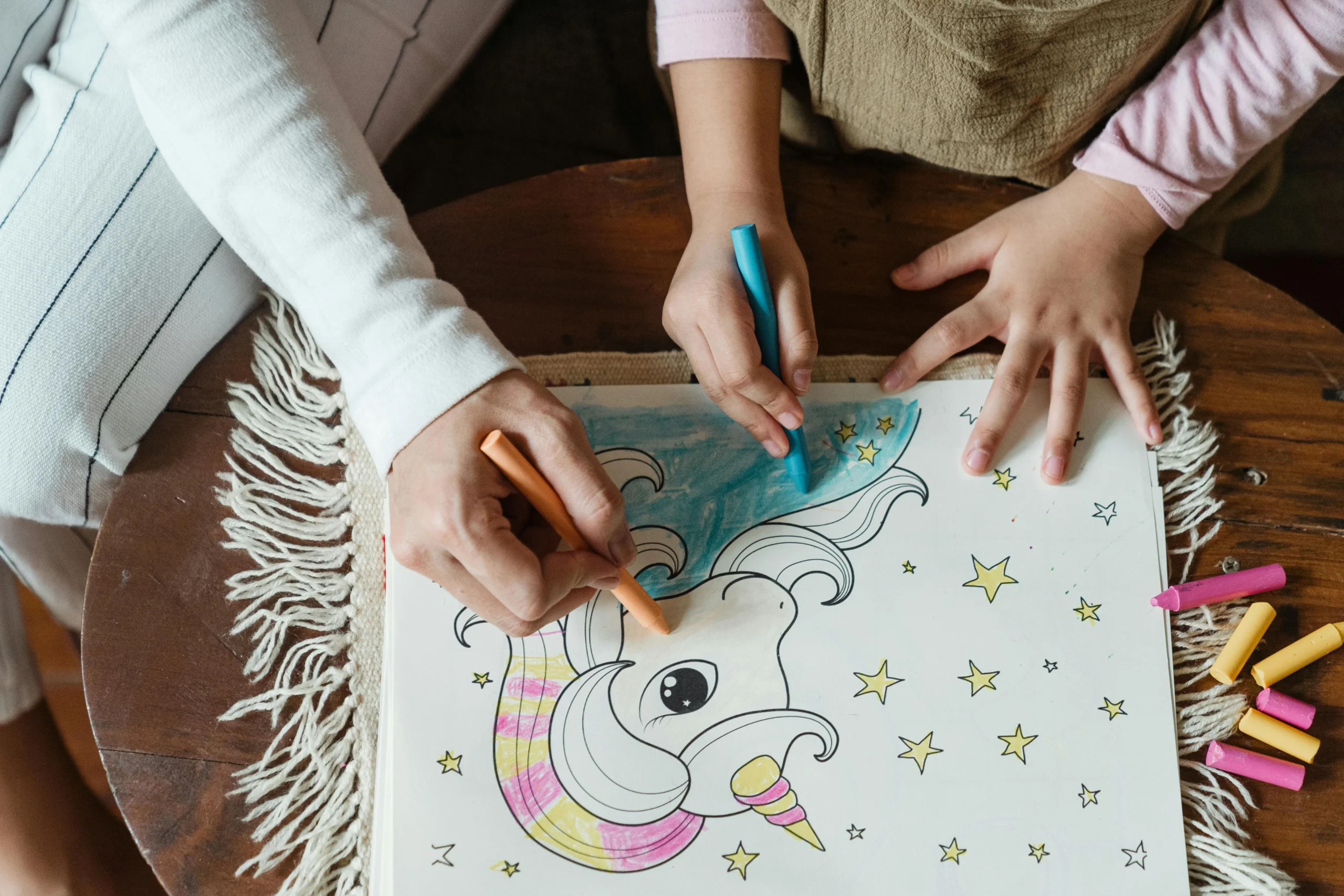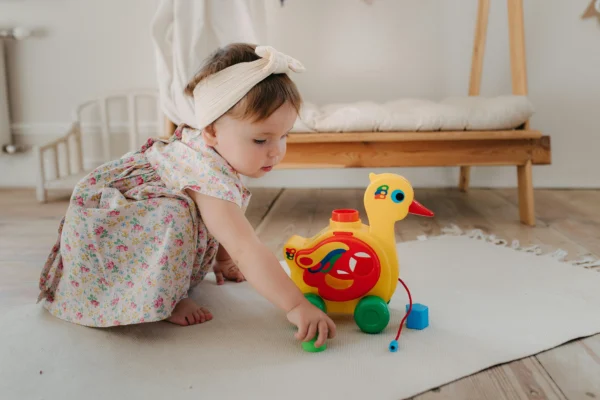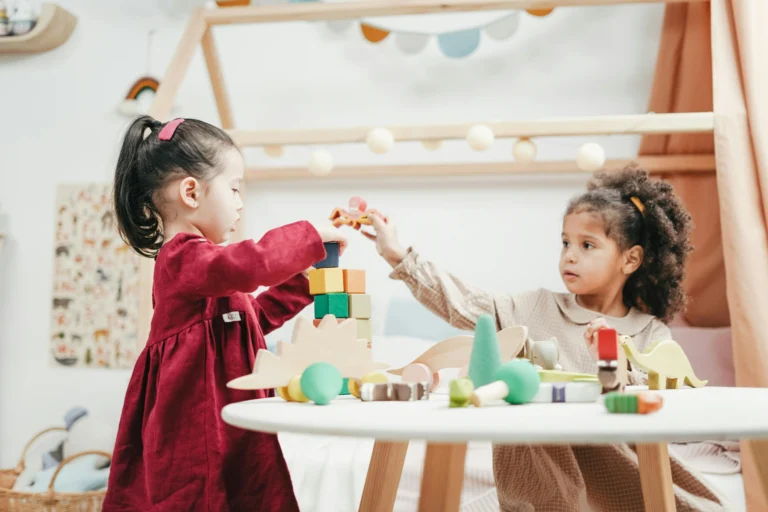When you’re a parent, the world of toys can feel overwhelming with aisles full of flashing lights, buzzing buttons, and promises of “educational” value. But the truth is, not every toy is worth your time (or money). The best toys are the ones that help your child grow, play independently, and explore their world with curiosity.
This guide cuts through the noise and shows you what truly matters when building your child’s toy collection, starting with a handful of essentials that encourage creativity, movement, and real learning.
What Makes a Toy “Essential”?
Great toys, like Montessori toys, aren’t just for fun; they spark curiosity and give children a chance to experiment, make decisions, and interact with the world around them. Look for age-appropriate toys that encourage active participation, rather than passive entertainment.
Toys with bright colors, texture, or movement help keep babies engaged, while preschoolers may prefer puzzles, dolls, or games. Whether it’s stuffed animals or pull toys, what matters most is that your child is doing the playing, not the toy. These are the best toys for developing creativity, motor skills, and confidence at every age group.
Infants (0–12 Months): Building Sensory Foundations

Babies explore with their mouths, hands, and eyes, so sensory toys are top picks during this stage. Use high-contrast activity books, squeeze toys, textured balls, and rattles to stimulate early sensory development. Tummy time mats, mirrors, and crinkle cloths also help build neck strength and gross motor skills.
Introduce soft stacking cups, plush stuffed animals, silicone teethers, and wooden blocks for babies to grab and explore. These age-appropriate toys for newborns support fine motor skills and let your baby interact with safe, hands-on objects that build awareness of size, shape, and sound.
Toddlers (1–3 Years): Movement and Discovery
Toddlers love movement, and this age group thrives on discovery. Use pull toys, push vehicles, and ride-on play items. These toys for your 1-year old children encourage balance, walking, and coordination. These support both gross motor and life skills as your child gains independence.Hands-on developmental toys like shape sorters, large beads, simple puzzles, and interlocking blocks help toddlers develop fine motor skills and problem-solving. Keep a stash of play dough, crayons, and toddler-safe paint nearby for sensory and creative play. Even cardboard boxes and everyday containers can become the best toys for 2-years-old kids
Preschoolers (3–5 Years): Imagination Takes Off
In this stage of life, children begin to act out real-world situations and stories. Dolls, plastic animals, toy food, and dress-up clothes all support pretend play and creativity. These toys allow kids to explore family roles, routines, and emotions.
Encourage early cognitive development with magnetic letters, number tiles, and age-appropriate games. Wooden blocks and pattern boards are excellent for spatial skills and building focus. At this age group, open-ended play with simple materials helps kids become better learners, and better problem solvers.
Early School Age (5–8 Years): Challenge and Creativity

Older children start showing interest in more structured games and hobbies. Introduce puzzle kits, logic games, science tools, and construction sets to support deeper thinking and educational growth. Building things fosters creativity and boosts confidence.
Let kids explore creative play through drawing, painting, and crafting. Toys like sketchbooks, musical instruments, or beginner-friendly cooking tools help them express themselves while refining their fine motor skills. At this stage, toys should evolve with your child’s interests and support development across physical, emotional, and cognitive areas.
How to Assemble Your Starter Toy Kit
You don’t need every toy on the market. Here’s how to build a smart collection that encourages development, play, and variety without taking over your living space.
Start with 3 to 4 Toys per Play Category
Begin by selecting three to four toys from each of the key developmental categories: sensory, motor, creative, and pretend play. This gives your child a balanced play environment that supports multiple skills. Choose key sensory toys (like textured balls), motor toys (push wheels or pull toys), creative tools (crayons, play dough), and pretend items (dolls or plastic animals). This mix ensures your child has a full play environment.
Rotate Toys to Keep Play Fresh
One of the easiest ways to extend interest and reduce clutter is through toy rotation. Every two to four weeks, swap out a portion of the toys and bring in ones that haven’t been seen in a while. This makes old toys feel new again and helps your child focus better, as they’re not overwhelmed with too many options at once.
Mix New with Pre-Loved for Budget-Friendly Variety
Secondhand toys or toy-share libraries are great options for padding your collection affordably. Many high-quality toys hold up well over time, and sourcing gently used ones is both economical and sustainable. Look for local consignment stores, parent groups, or community swaps.
Let Your Child Participate
As your child gets older, especially past age two, they can help choose which toys to bring out next. This not only gives them a sense of ownership but also helps build early decision-making and planning skills.
Choose Simple, Open-Ended Materials
Some of the best toys are the simplest: wooden blocks, puzzles, paints, or even cardboard boxes. Avoid toys that light up or play videos automatically. Instead, give your child toys that require imagination and allow them to sit, build, and create.
Understanding Safety and Children’s Toys

Keeping your child safe during play begins with choosing the right toys for their age and developmental stage. Prioritizing safety ensures your child can explore, learn, and grow without unnecessary risks. Here are key safety guidelines for selecting age-appropriate toys:
Always check age recommendations.
Toy labels are more than suggestions; they’re based on child development and safety standards. A toy that’s great for one age group may be unsafe for another. Avoid toys with small parts for babies and toddlers, especially those that can fit in a child’s mouth.
Watch for choking hazards.
Anything smaller than a cardboard tube can be dangerous. Avoid small objects or loose accessories that might break off from dolls, puzzles, or plastic toys.
Avoid long cords or strings.
Toys with cords longer than 7 inches, especially on pull toys or activity sets, can pose a strangulation hazard for infants and young toddlers.
Choose non-toxic, child-safe materials.
Look for BPA-free plastic, solid wooden blocks, and water-based paints. These are safer for teething and mouthing, especially for stuffed animals and squeeze toys often used during tummy time.
Inspect toys regularly.
Cracks, chipped paint, or broken wheels can turn fun into danger. Discard damaged toys and be cautious with older vehicles, games, or toys with wheels or containers that could trap fingers.
Avoid dangerous components.
Button batteries and small magnets are extremely hazardous if swallowed. Keep them far out of reach, especially if found in educational toys, electronic games, or light-up plastic animals.
Stay alert to recalls.
Visit Consumer Product Safety Commission regularly to check for recalls on developmental or sensory toys, especially those made for young children or toddlers.
Trust your instincts.
Even if a toy is labeled for your child’s age, if it seems flimsy or not suited to their stage of development, it’s best to skip it. Prioritize durable, thoughtfully designed toys that support safe play.
By following these tips and selecting toys that align with your child’s age, interests, and abilities, you’re creating a safe, engaging play environment, one that encourages healthy growth through every stage of life.

